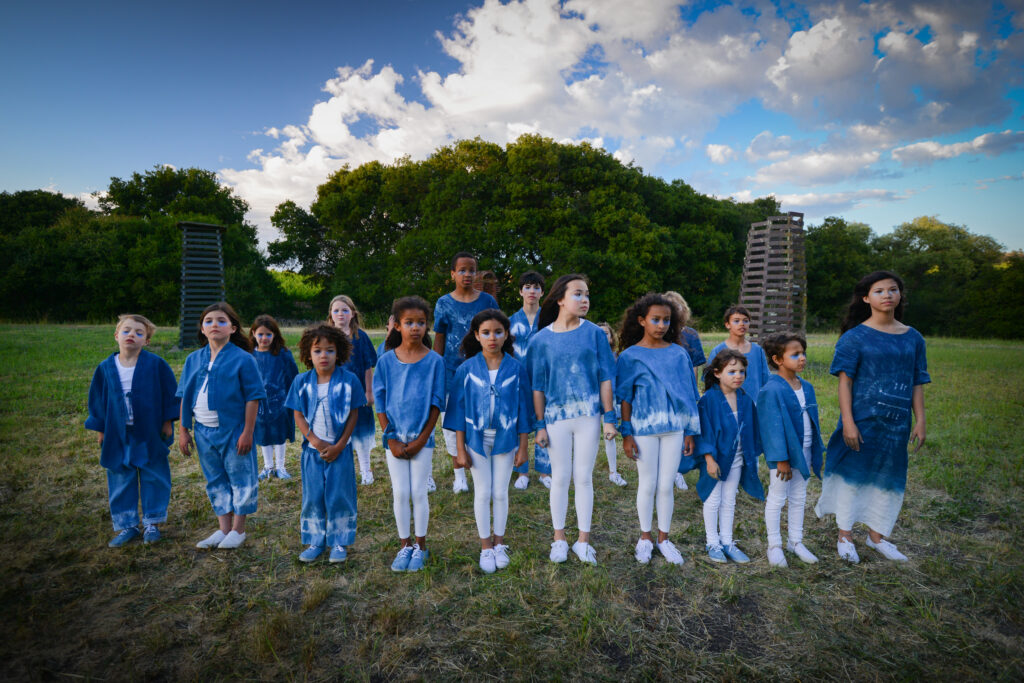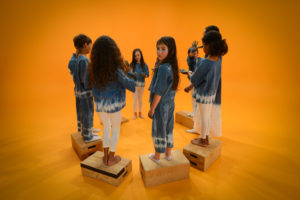
Desirée Holman, Sophont, 2015 (still); photo: Charles Villyard
In Desirée Holman’s Sophont (2015), Indigo Children loosely represent the future. They are played by young people aged seven to seventeen, who in their appearances tend toward androgyny and generally have olive to dark brown complexions, suggesting a possible future void of gender and ethnic distinctions.
They wear indigo-colored clothing and their hands are also stained with the color. “The indigo children are very drawn to differences, and exist, in a way, to flatten hierarchical levels,” Holman explained to Westword. “This is a concept that’s been around for quite a while, especially when thought of in an energy-specific world.”
Holman did not invent this character type. Rather, the name refers to a New Age concept in which the youths are also sometimes called crystal children or star children. They are a new breed of human-looking children who are partly or fully extraterrestrial in origin and possess extrasensory and psychic abilities, deep spiritual connectivity, extraordinary creativity, and high levels of intelligence and empathy. They may have difficulty learning in traditional school environments, experience discipline problems, and/or be diagnosed with ADD or ADHD. They are entirely self-identified. Generally, they are said to have been born after the 1987 Harmonic Convergence.
Indigo children are digital natives—examples of a techno-advanced intelligence that may bring to light a new formula for peaceful cooperation with emotive technologies. They are often described as the next stage in human evolution, whose purpose is to usher in a new and improved phase of our species.

